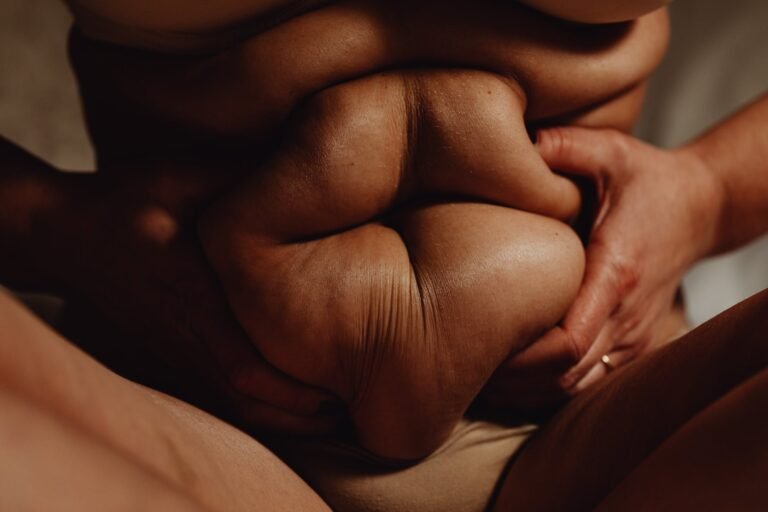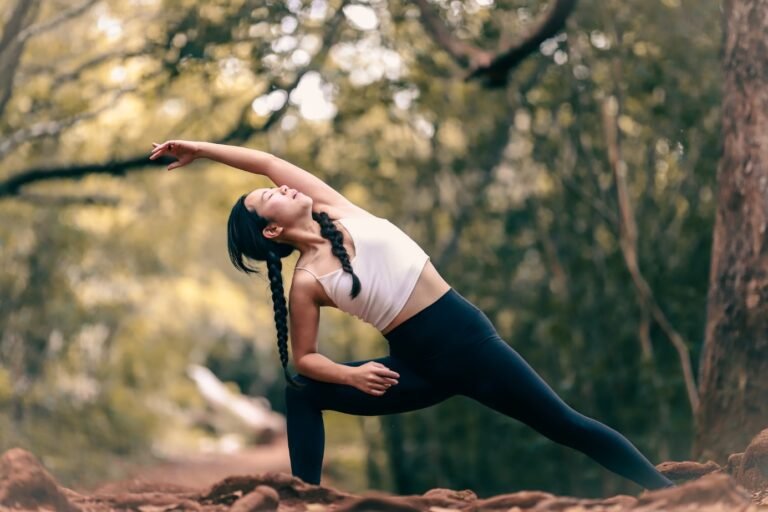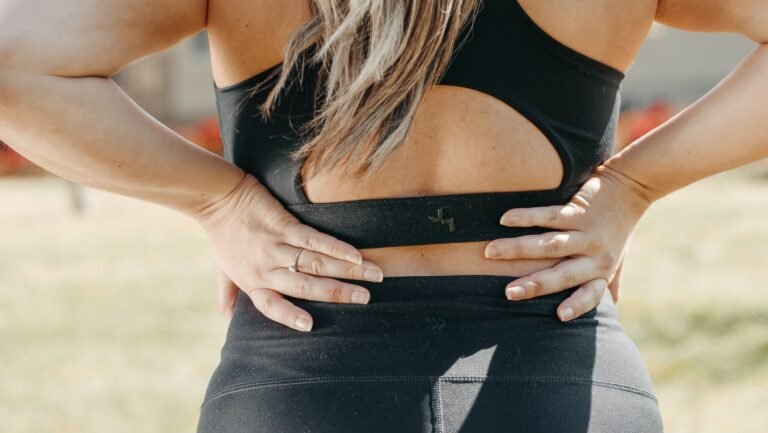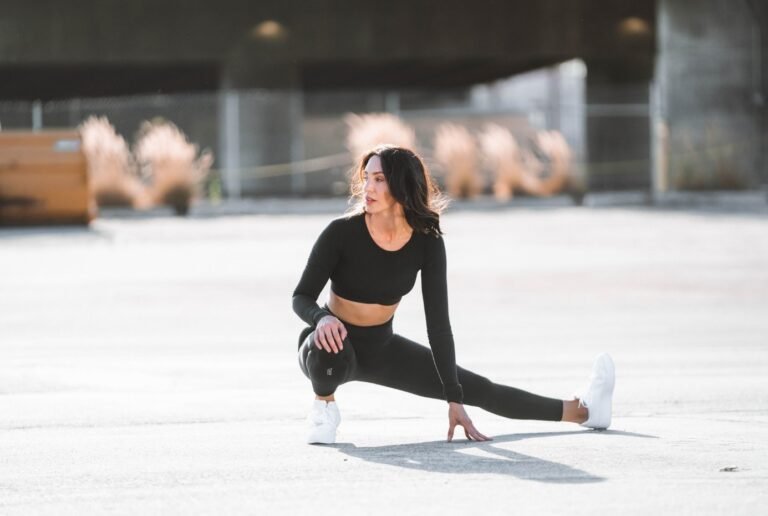5 Poses to Expect in Your First Yoga Class
Yoga biginners , all the names of asanas (poses), and the different types of Yogas can scare you. But like everything, it is by practicing that we progress! As you practice, you will become familiar with the different names of postures, then gradually assimilate them into your routine.
In order to help you build a solid base for your practice, we recommend the following 5 postures.
THE 5 yoga poses FOR BEGINNERS
We have selected these 5 postures because they are relatively easy to reproduce, but also very common in yoga classes for beginners .
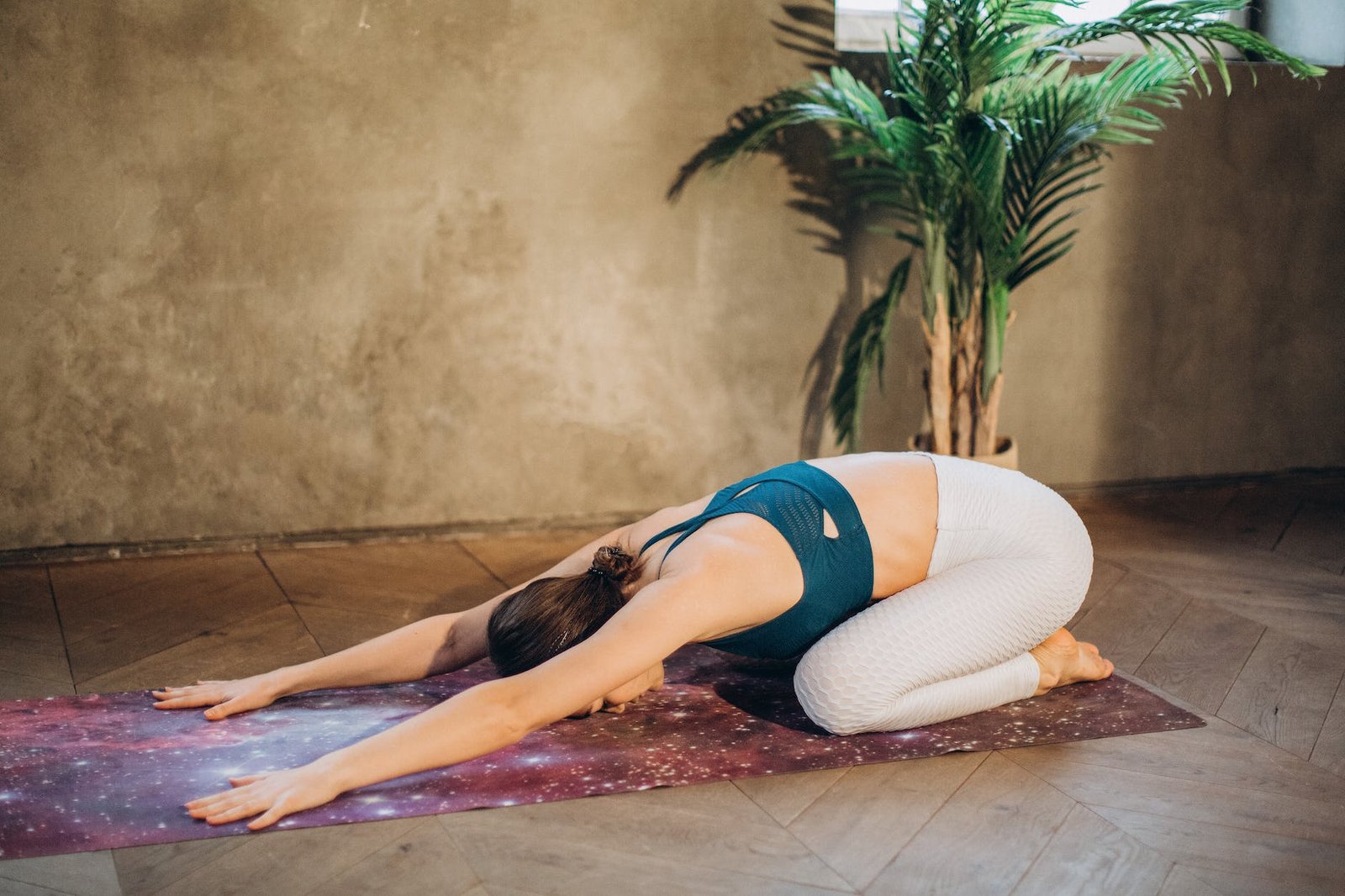

yoga:(Balasana)
Often used as a posture at the beginning of class, or as a resting posture in transition between two sequences, the posture of the child is a good option for beginners – whether they are more or less flexible! This asana allows a light and gentle stretching of the shoulders, lower back, ankles, hips, and inner thighs. This is a perfect pose to prepare for a deeper stretch later.
To do this pose:
- Kneel on the floor, and let your hips slide into your thighs.
- Let your torso slide gently against your inner thighs, while your arms are stretched out in front of you, palms facing the floor.
- Rest your head gently on your mat or on a brick. Hold this pose for a few minutes while breathing deeply.
Benefits of Balasana in yoga
- Stretches ankles, hips and inner thighs.
- Lengthens and stretches the spine.
- Calms and refocuses the mind.
- Releases tension in the back, chest and shoulders.
Plank (Phalakasana)
The plank is a fundamental posture of yoga because it is the basis of many other more complex postures. It strengthens the wrists, arms and trunk. It is essential to maintain perfect alignment to succeed in this pose. Remember to check that your hips are well aligned with the rest of the body. and to properly engage the abs throughout this pose.
To do this pose:
- Start on all fours. Place your hands on the same line as your shoulders and align your knees under your hips.
- Engaging your triceps, raise your upper body so your elbows are parallel to the wall behind you.
- Lift your knees and extend your legs behind you, hooking your toes. Engage the torso, tuck in the tailbone and squeeze the inner thighs.
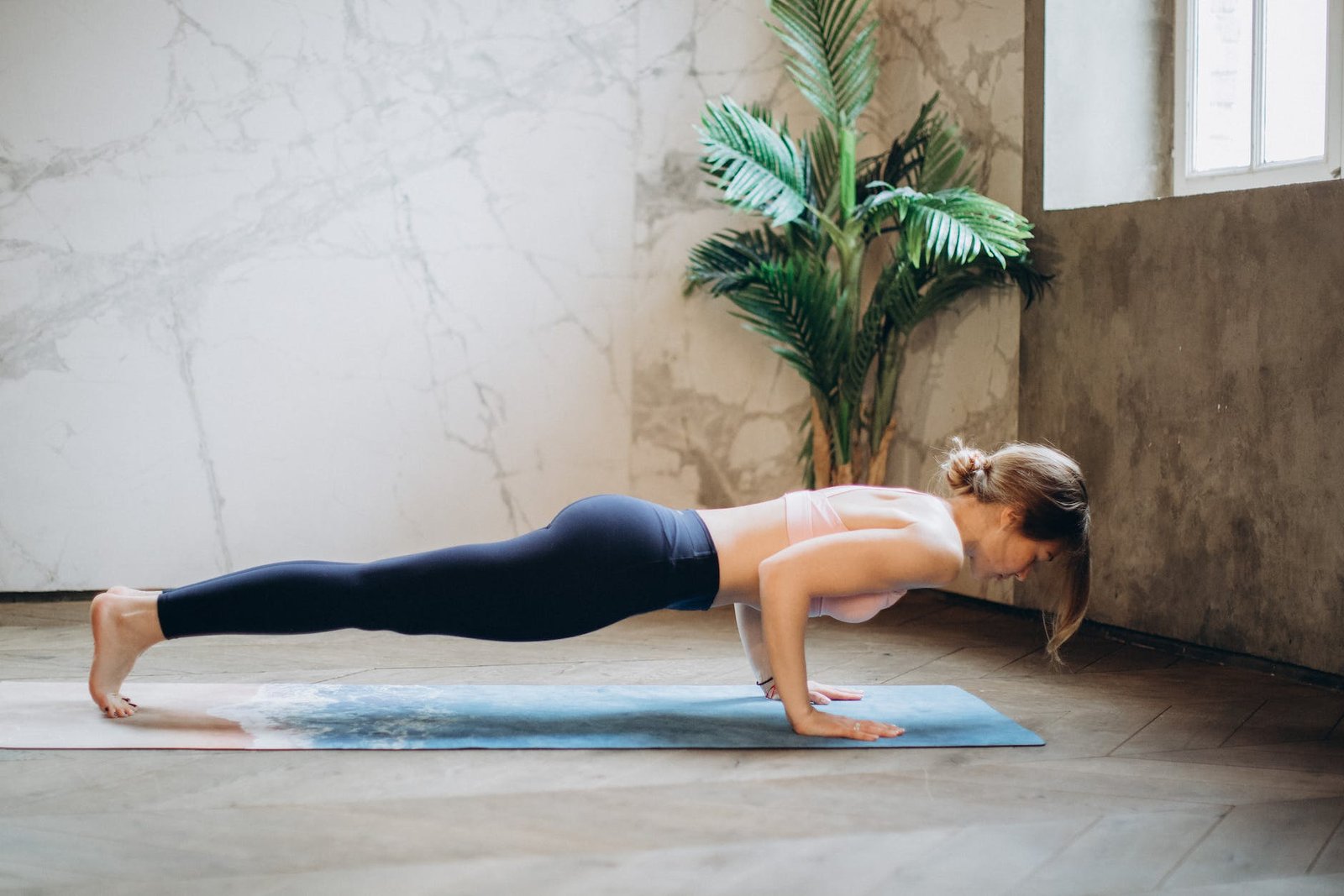

The benefits of the plank in yoga:
- Strengthens the whole body, especially the torso, chest, shoulders, back and legs.
- Improves your posture.
- Relieves back pain.
Downward Facing Dog (Adho Mukha Svanasana)
When you think of yoga poses, downward facing dog is probably the one that immediately springs to mind. This asana is ubiquitous in flow yoga classes, but it’s also often (and sadly) performed incorrectly — slouched shoulders, hunched back — which increases your risk of injury during your practice.
It is important to master this posture correctly from the beginning, since you will use it constantly during the rest of your practice.
- Start at the table – on all fours – and place your hands on the same line as your shoulders.
- Turn your elbows slightly so they are parallel to the wall behind you. Press your hands towards the mattress to engage the torso.
- Raise the knees and hips in the air then stretch them backwards. Remember to align your shoulders with your hands and hips.
- Lengthen your spine and squeeze the inner thighs.


The benefits of Adho Mukha Svanasana:
- Reduces stress and anxiety.
- Relieves neck, shoulder and back tension.
- Lengthens your spine and improves your posture.
- Stretches shoulders and calves.
The Warrior 2 (Virabhadrasana II)
Warrior 2 is one of the most accessible postures for beginners because it invites you to become aware of your body and the importance of alignment in yoga. These two notions are fundamental and you will hear them often!
To do this pose:
- Standing with your feet together, slowly slide your right leg sideways, aligning your knee with your ankle.
- Swivel the right foot at 45° – the left foot does not move – then raise the arms at shoulder level parallel to the ground.
- Extend the arms as far as possible, engaging the abs, shoulders and thighs. Hold this pose for a few minutes while breathing deeply.


The benefits of Virabhadrasana II:
- Strengthens shoulders, back, arms and legs.
- Stretches the chest,
- shoulders and neck.
- Opens the chest and hips
- Strengthens your balance and concentration.
- Increases circulation and your energy.
Spine Twist (Supta Matsyendrasana)
This twisting posture opens the heart and helps release tension from the back, while stretching the spine. It’s the perfect stretching pose after a yoga session – or a long day of sitting or standing.
To do this pose:
- Lying on your back, roll your right knee slowly towards your chest, holding it between your arms. The left leg stays straight on the ground.
- Release your arms from their embrace and place them on either side of your body. Slide the right knee to the left side of your body.
- Gently twist your trunk to the right side until you feel a stretch.
- Return to the center and repeat with the other leg on the other side of the body.
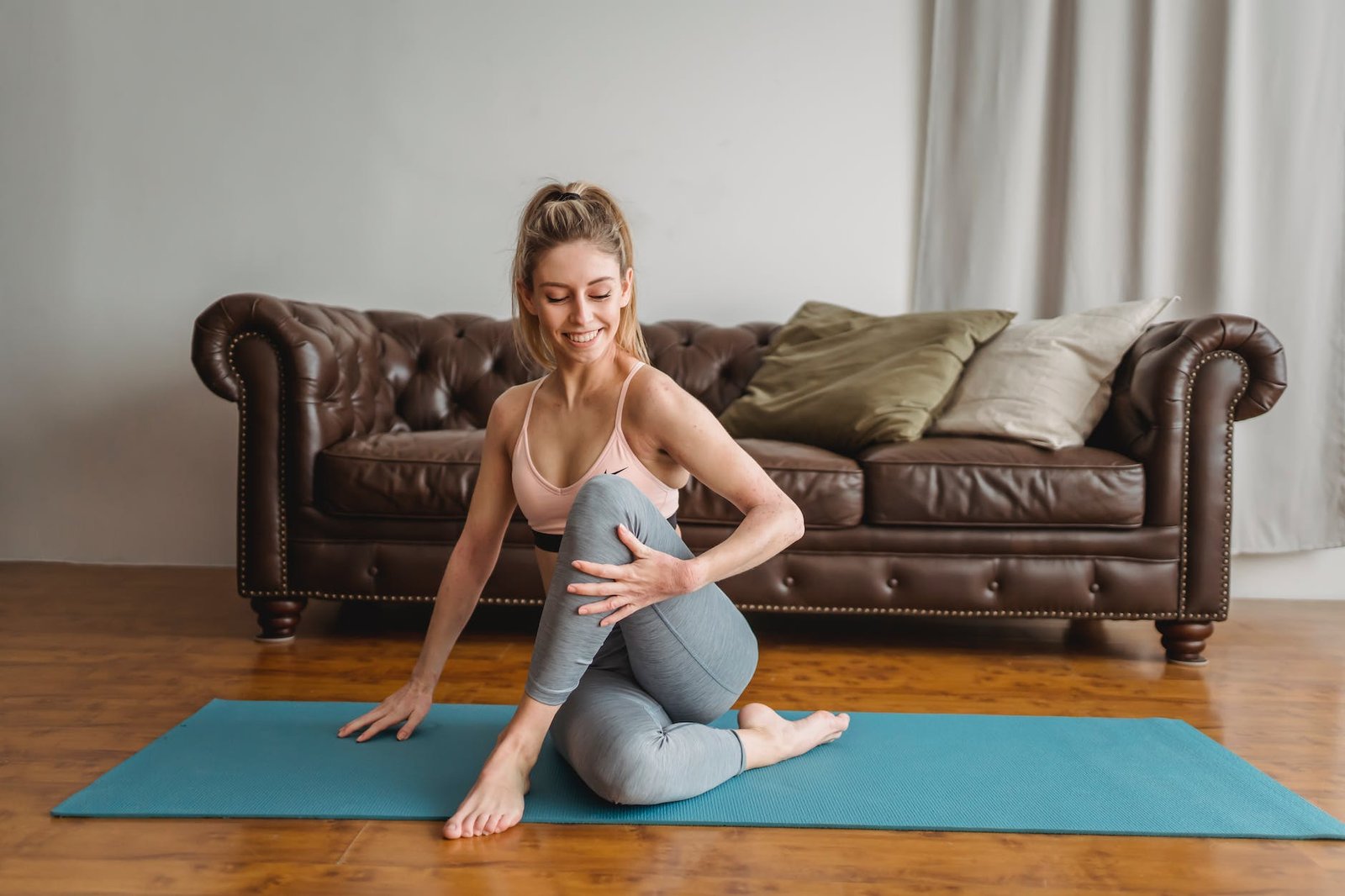

Benefits of Supta Matsyendrasana):
Stimulates internal organs.
Stretches the back and spine.
Soothes and relaxes the whole body.


